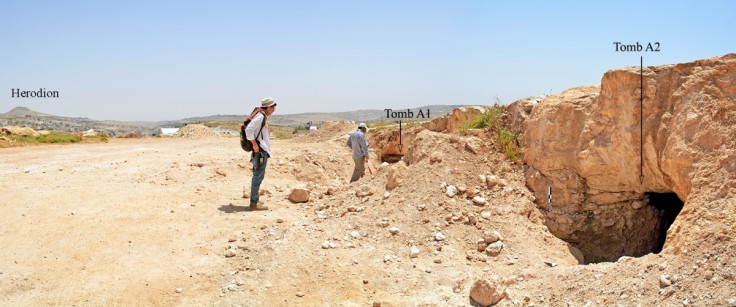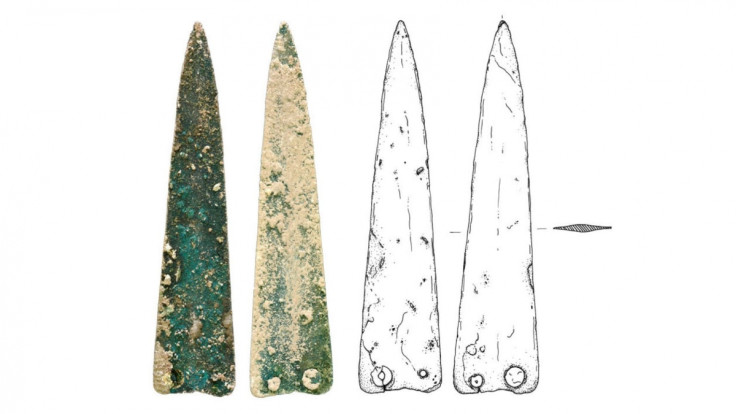Warrior tombs found in massive 4,200-year old necropolis near Bethlehem

The prehistoric cemetery was found by Italian and Palestinian archaeologists working at a site called Khalet al-Jam'a. It proves for the first time that the city thrived in Canaanite times. More than 100 tombs dating to around 2200BC-650BC were excavated and many have been looted by thieves.
"The finds confirm that there was a Canaanite town in Bethlehem. This had have never been proven before," Lorenzo Nigro, head of the excavation and professor at Sapienza University of Rome, said. Ancient texts refer to a "Beth-Lehem" that flourished in the area, according to a Live Science report.
Important artefacts discovered in the burials include three bronze daggers and an axe. The longest blade, measuring 21 cm, is a Mycenaean type of the late Bronze Age, triangular in shape with large-headed rivets. This was found in a warrior's grave, says Lorenzo, and had been imported from Mycenae in southern Greece. The Mycenaeans were considered the best weaponmakers in the ancient world at that time.
The same burial contained "Hyksos-like" signet amulets, known as scarabs. The signet scarab beetles were mounted on golden or bronze rings. The scarab symbol was one of the most important in ancient Egypt, symbolizing the sun, resurrection, transformation and protection.

"These finds are very important, since we know that from the 13th dynasty onwards, the Eastern Delta was ruled by 'Asiatic' pharaohs – Egyptian kings with strong links with Palestine, since their warriors were Canaanites with weapons and customs like those excavated in Khalet al-Jam'a," said Lorenzo. Egyptians scarabs have been found all around the Levant, recently during the excavations of Azekah in the Shepelah.
"They show the direct interconnection and contiguity between the ruling class in southern Palestinian cities (Jericho, Sharuhen, etc) and the Pharaonic court reigning in Tell el-Dab'a, ancient Avaris, the Hyksos capital of Egypt between 1750BC-1650BC," said Lorenzo.
In one tomb, the remains of a man, woman and child were found buried with two bronze daggers and a number of pots and vases, believed to have been needed in the afterlife. Archaeologists found that the tomb is more than 3,500 years old.
Another tomb at Khalet al-Jam'a contained a fine specimen of an almost intact male skeleton buried with a ceramic lamp that had four sides folded into spouts. Scientists believe this grave may date to the early Bronze Age, more than 4,000 years ago.
The necropolis stopped being used around 650BC, Nigro says, noting that the name Bethlehem stopped appearing in ancient documents for many centuries and only reappeared in texts around the time of Christ.
"It seems that the town suffered a crisis," Nigro wrote in the journal Vicino Oriente. What happened in Bethlehem around 650 BC is unknown, but this was an unsettled time when Assyrian and Babylonian empires were engaged in military campaigns and captured land in the region.
© Copyright IBTimes 2025. All rights reserved.






















